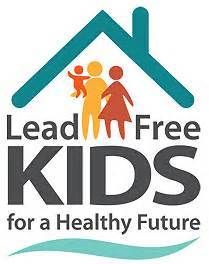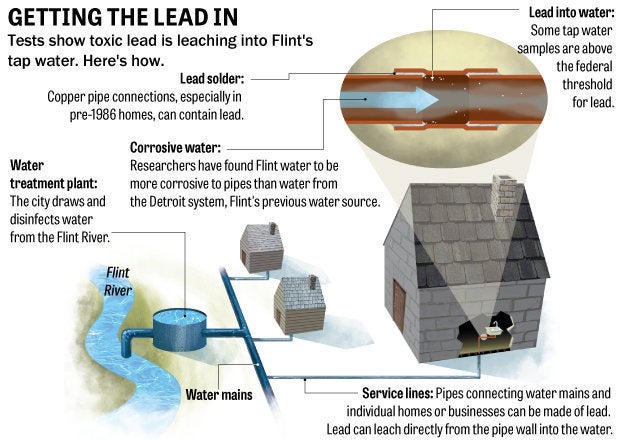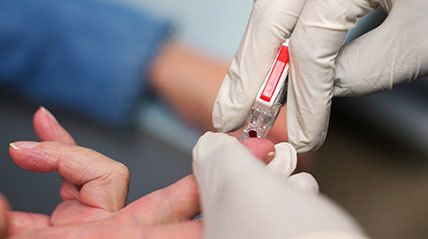When the news broke in 2014 about evaluated lead levels in Flint, Michigan’s water, I, like many parents, was outraged. Thousands of residents had drank polluted Flint River water for 18 months before the disaster was even recognized. Many children were lead poisoned. The consequences of the exposure of elevated levels of lead are still unfolding. The latest study demonstrates that Flint’s lead-in-water contamination crisis caused lower fertility rates and higher infant death.
The story, however, does not end in Flint, MI. Instead, many cities in the North East and Mid-West have elevated levels of lead in their drinking water. In particular, in Pittsburgh, in July 2016, testing by Pittsburgh Water and Sewage Authority (PWSA), serving 83,000 customers in Pittsburgh and surrounding communities, reported higher-than-allowed lead levels in its tap water samples. The reported lead levels in July 2016 and December 2016 were over 15 ppb, thus requiring PWSA to take remedial action under the Environmental Protection Agency’s standards in connection with the Safe Drinking Water Act.

As a concerned parent, I had followed this issue, off and on, but admittedly, it had fallen off my immediate radar. Like all parents, things like scheduling work around the school calendar, dinnertime, homework, and the to-do list take my daily attention. But, I’ve tried to summarize what every concerned parent might need to know about lead exposure. At least, I hope that you could use this as a starting place to (re)educate yourself on this continuing issue.
According to the Center of Disease Control (CDC), today at least 4 million households have children living in them that are being exposed to high levels of lead. There are approximately half a million U.S. children ages 1-5 with blood lead levels above 5 micrograms per deciliter (µg/dL), the reference level at which CDC recommends public health actions be initiated. BUT, no safe blood lead level in children has been identified.
Sources of Lead Contamination (Source credit)
Lead has been used for thousands of years in many ways, including in water pipes, paints, gasoline, cosmetics, batteries, and pesticides. Lead can also be found in ores that are mined for commercial use (iron, cooper), in coal, and in drilling operations for oil and natural gas.
Lead contamination is not limited to water supply. Lead can contaminate the air, soil, and water through fossil fuels processes. People are exposed to lead in a number of ways, including lead-based paint, lead toys, contaminated food, and through contaminated soil.
An important source of lead in the environment is household lead-based paint. It’s estimated that approximately 35% of housing units in the U.S. contain lead-based paint, with houses built before 1960 having higher concentrations of lead in interior and exterior paints compared to those built afterwards.

The EPA did not ban lead-based paint until 1978. In older cities, such as Pittsburgh, children are considered at high risk for the health effects from exposure to lead, says Don Hopey, reporter with the Pittsburgh Post-Gazette, because 80% of the residential dwellings were built before 1978.
Worried about the Paint in Your Home?
If you are living in a home that was built before 1978, you are likely worried about lead-based paint. There are some inexpensive home testing kits for surfaces and toys. However, some experts say that lead testing kits available from the hardware stores are unreliable. For children who live in homes built before 1978, see here for tips to reduce the risk of lead poisoning from old paint, even if that old paint is covered by newer, lead-free layers, which include making precautions when renovating an older home to minimize dust.

How does Lead enter the Body?
Flaking and peeling paint in older, unkempt buildings make contaminated dust. Children can breathe and ingest house dust contaminated from lead-based interior paints and from contaminated soil (from lead-based exterior paints) outside. Infants, toddlers, and young children put objects in their mouths, including toys, dirty hands, and food. Other sources of lead can be found here.
Medical Effects of Lead Exposure (Source Credit)
As lead accumulates in the bodies of children who are chronically exposed to it, even at low levels, the damage it causes is unforgiving:
Lead acts very much like calcium in the bloodstream, so it tends to build up in bone. Children’s growing bones are metabolically active to the extreme, so lead doesn’t stay there for long. Instead, it travels to other metabolically active and growing organs, particularly the brain. It is here that lead, a natural heavy metal, can do the most unnatural damage.The injuries caused by lead in a developing child’s brain may be profound, or it may be subtle, but it is always permanent. We know that brain damage from lead causes lower IQ’s and other cognitive delays, learning disabilities, hearing impairments, difficulties with attention and concentration (ADHD), decreased academic achievement, and anti-social and other behavioral problems. All these effects have life-long consequences for children when they become adults, and for the rest of society.

A recent study found that study participants who had greater lead exposure in childhood had a lower IQ later in life. It’s not just that the lead pollution limited their IQ, but rather that their IQ actually declined.
Lead is toxic to humans in small amounts. There is no safe level of exposure to lead. And no one is more vulnerable to those toxic effects than children. Lead can be acutely toxic to the body if ingested in large amounts, but that doesn’t happen very often. Instead, it is better to think of lead as a cumulative toxic: small amounts are ingested and accumulate in the body over time. That is why a child can be poisoned from ongoing exposure to relatively small amounts of lead, i.e, in drinking water.
How does Lead Get Into the Water?
Drinking water typically starts out virtually free of lead because most source waters naturally have very low levels. The metal is introduced into tap water as it passes through lead service lines and across lead-soldered joints or as it sits next to brass and bronze fixtures that contain lead. In recent years lead contamination in tap water has been triggered by treatment changes that alter the water chemistry, destabilizing lead-bearing mineral scales that coated lead service lines and corroding lead-bearing solder, pipes, faucets, and fixtures. (Source Credit)
The following illustration is a from Flint, MI, but is an effective visual of how contaminated water enters the home.

Are Newer Homes Still at-risk for Lead in Tap Water?
Newer homes may be at risk for elevated levels of lead in their tap water. The EPA explains:
Lead can enter drinking water through corrosion of plumbing materials, especially where the water has high acidity or low mineral content that corrodes pipes and fixtures. Homes built before 1986 are more likely to have lead pipes, fixtures and solder. However, new homes are also at risk: even legally “lead-free” plumbing may contain up to eight percent lead. Beginning January 2014, changes to the Safe Drinking Water Act will further reduce the maximum allowable lead content of pipes, pipe fittings, plumbing fittings, and fixtures to 0.25 percent. The most common problem is with brass or chrome-plated brass faucets and fixtures with lead solder, from which significant amounts of lead can enter into the water, especially hot water.
Why are Children Particularly Vulnerable to Lead Poisoning? (Source Credit)
Exposure to lead in children and adults occurs in the lungs, where lead molecules attached to dust enter the airways and are absorbed into the bloodstream. Exposure occurs in the gastrointestinal tract after lead-contaminated paints, water, and food are ingested and absorbed. Children are especially prone to lead poisoning because they like to play in dirt that, unbeknownst to them, may be contaminated with lead. They are also less inclined to wash their hands before putting their fingers, toys, debris (ie. paint chips), and food in their mouths. For those reasons — and because children breathe more air and drink more water per unit volume compared to adults — they are at highest risk of exposure to lead and other environmental toxics.
Lead Testing by Pediatricians
A recent study published in the Journal of Pediatrics revealed that Pennsylvania has the second highest proportion of children with elevated blood lead levels (Minnesota was first). More than 5 million pediatric blood samples sent for lead testing were analyzed nationally and… zip codes 151xx and 152xx ranked as two of the worst 20 regions for both high levels of lead in the blood (defined as between 5 and 10 micrograms) and very high levels of lead (more than 10 micrograms).
Universal lead testing for children varies from state to state.
On August 30, 2017, Governor Tom Wolf announced his support for universal testing of blood-lead levels in all Pennsylvania children under the age of two to determine who is at risk for lead poisoning and where children with the highest and lowest blood-lead levels reside.
In Allegheny County, however, legislation on universal lead testing by pediatricians was passed in July 2017 and is will go into effect on January 1, 2018. The law will require all children at ages 1 and 2 to undergo a blood test to detect lead.
Pediatrician offices generally have parents fill in a questionnaire about lead exposure. These questions ask about age of the child’s home and maybe Grandma’s home too and if the child is prone to put metal (like car keys and jewelry) or dirt into her mouth. Offices generally use these forms to screen for potential lead poisoning.
A Tribune Review article from May 2016, offers this reasoning as to why so few Pennsylvania children are lead tested, “Some pediatricians might decide not to screen based on questions they ask. Some parents might decide not to screen because they don’t think there is a risk and they don’t want to subject their children to a blood draw, which can be traumatic.”
Should I Test My Child?
If you think that your child has been exposed to lead, talk to your child’s pediatrician. Like everything else, you have to be your child’s advocate. Since it is not part of routine check-ups and wellness visits just yet, you must specifically ask for the testing at this point in time. A lead test can often be performed on a very small drop of blood obtained with a fingerstick. According to Dr. Edward Ketyer of Pediatric Alliance, this test is inexpensive, relatively quick, easy, non-evasive and should be covered by most insurances. In Pennsylvania, lead testing is covered for all children receiving medical assistance.

Should older children be tested?
Talk to your child’s pediatrician. Even though the universal testing legislation is about 1- and 2-year old children, if your child may have been exposed to lead, and have a valid medical concern, ask for your child to be tested.
Should Pregnant and Breastfeeding Women be Concerned about Lead Exposure?
Lead can pass from the mother to her unborn baby or breastfed baby.
Too much lead in your body can
- Put you at risk for miscarriage.
- Cause your baby to be born too early or too small.
- Hurt your baby’s brain, kidneys, and nervous system.
- Cause your child to have learning or behavior problems.
If you are concerned about lead exposure during pregnancy and breastfeeding, talk to your provider. For more information, see here.
Lead is also harmful to adults. Adults exposed to lead can suffer from:
- Cardiovascular effects, increased blood pressure and incidence of hypertension
- Decreased kidney function
- Reproductive problems (in both men and women)
Testing for lead exposure is different for adults than for children. Talk to your doctor.
Ways to Prevent Lead Poisoning (Source Credit)
In order to reduce lead in drinking water:
- Know where your drinking water comes from.
- Know how your water is treated before it enters your home.
- Use cold tap water for cooking and drinking.
- Observe tap water for unusual colors, odors, tastes, and changes in clarity. Report such observations to the water company which supplies your water, and to the local or state health department if you feel your health is threatened.
- Consider using reverse-osmosis devices or carbon filters on the tap(s) where you draw your drinking water.
- Visit CDC.gov for more detailed information regarding lead in drinking water.
How else Can I get involved?
Like every public health issue, contacting your local and state politicians is always an option. See Allegheny County Controller’s Office lead page for local authorities’ contact information.
In conclusion, I encourage you to stay educated. I know that I am guilty of this myself, but being too busy to stay educated is not an excuse when it comes to your child’s health.
A version of this article originally appeared on Pittsburgh Moms Blog, entitled, “What Every Pittsburgh Parent Needs to Know About Lead Poisoning.”
